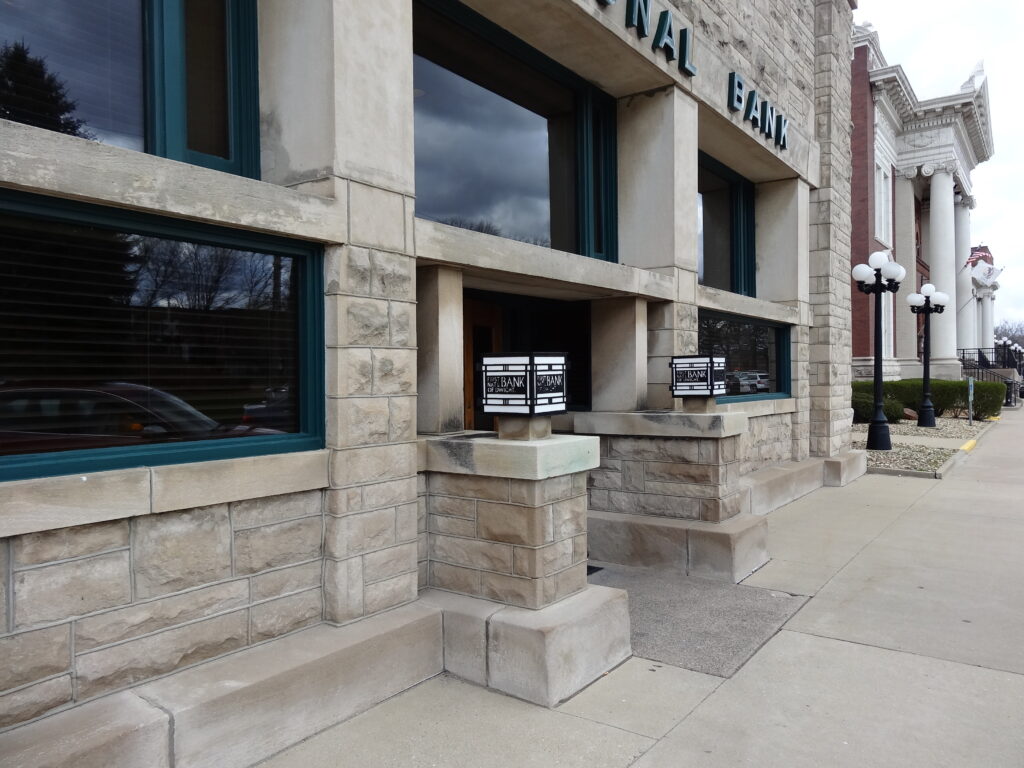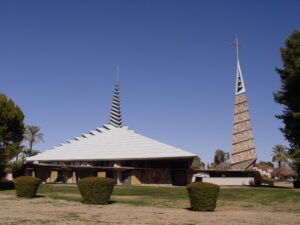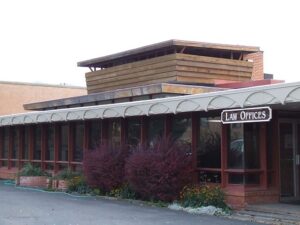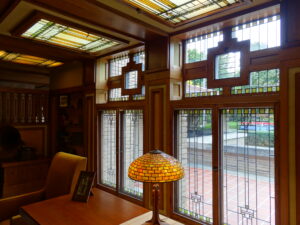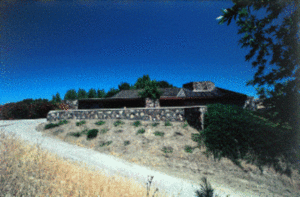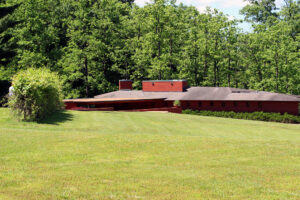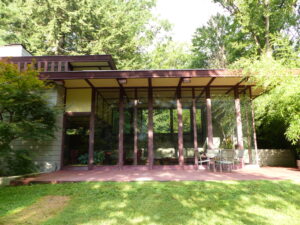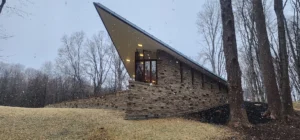The Frank Smith Bank Building is one of two banks that were designed by Frank Lloyd Wright. Now known as the Peoples National Bank of Dwight, the building is unassuming from the outside and tucked into the middle of the block across the street from the Amtrak station.
This page may contain affiliate links. See our disclosure about affiliate links here.
There are many things that come together to make a small Midwest town stand out from among many larger ones. In the case of Dwight, Illinois, history plays a rather large role. One could point to the fact that Dwight sits directly on perhaps the oldest road in the United States – Route 66. Also known as the Will Rogers Highway or the Mother Road, in 1926 it was the only continuous path from Chicago, Illinois to Santa Monica, California.
Small Town Connections
Or, one could point to Dwight as an Amtrak connection between Chicago and St. Louis. The train station – built in 1891 in Dwight, is listed on the National Register of Historic Places. History also places H. H. Holmes there in connection with the Keeley Institute. Holmes was a serial killer in Chicago around the time of the Columbian Exhibition, sending his assistant there for the “Keeley Cure” for alcoholism.
But history has also smiled very kindly on Dwight for a far more significant reason. Designed by Frank Lloyd Wright and one of only two banks that he designed (the other is in Iowa), the building was designed circa 1904 for a prominent Dwight citizen: Frank L. Smith. It was to house Smith’s real estate office and bank. Wright’s first design was for a three story building, but Smith rejected it, favoring the one and one-half story structure that exists today. Construction took place in 1905 and the building was opened in 1906.
The cut stone façade of the bank offers a simplicity not seen in most bank structures, but certainly present in all of Wright’s designs. It also offers a feeling of strength and dignity. The exterior of the building is composed of blocks of Bedford limestone, some of the finest, strongest and most durable stone ever quarried.
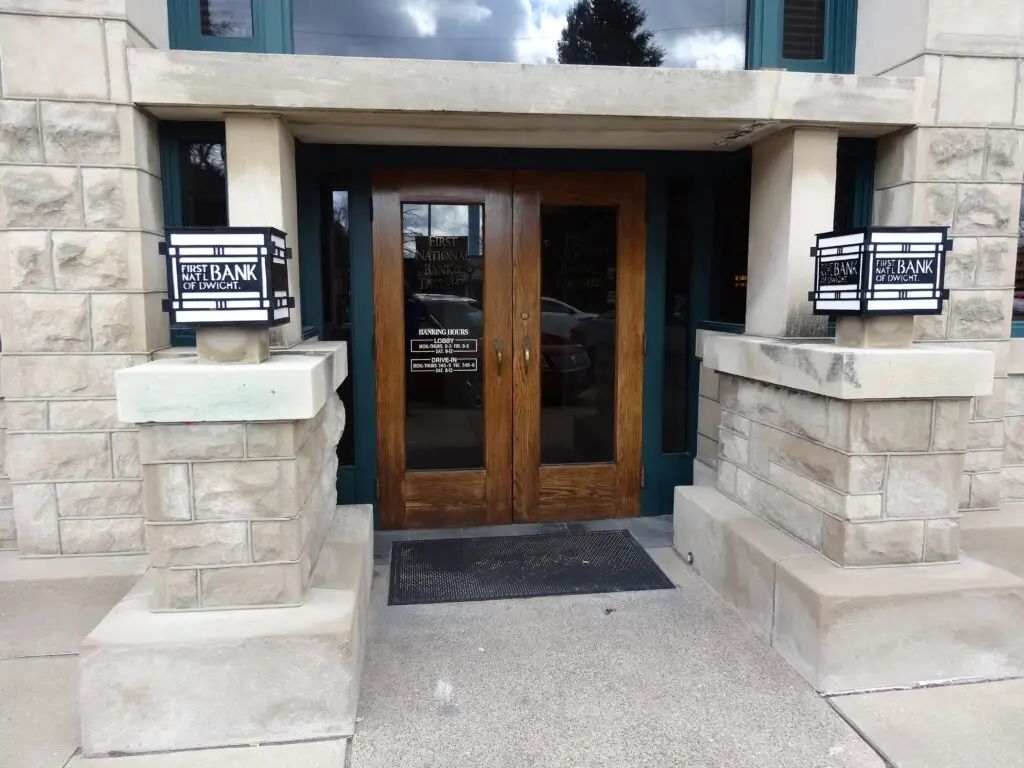
Wright Left His Mark
The small, low doors and low, narrow entry hallway to the bank are typical of many of Wright’s entryways. One gets a cramped feeling upon entering and then the interior opens wide once inside. The interior of the bank is a marvel to behold – looking not so much like a bank at all. The deeply-recessed and long horizontal windows and prairie-styled oak trim make it look more like a home.

A special meeting room has one feature that Wright always loves to include in his designs but is not normally found in a bank: a fireplace. Complete with Wright’s distinctive horizontal lines of Roman brick, the fireplace is a striking addition to the bank, as is an overhead skylight in the main portion of the bank.
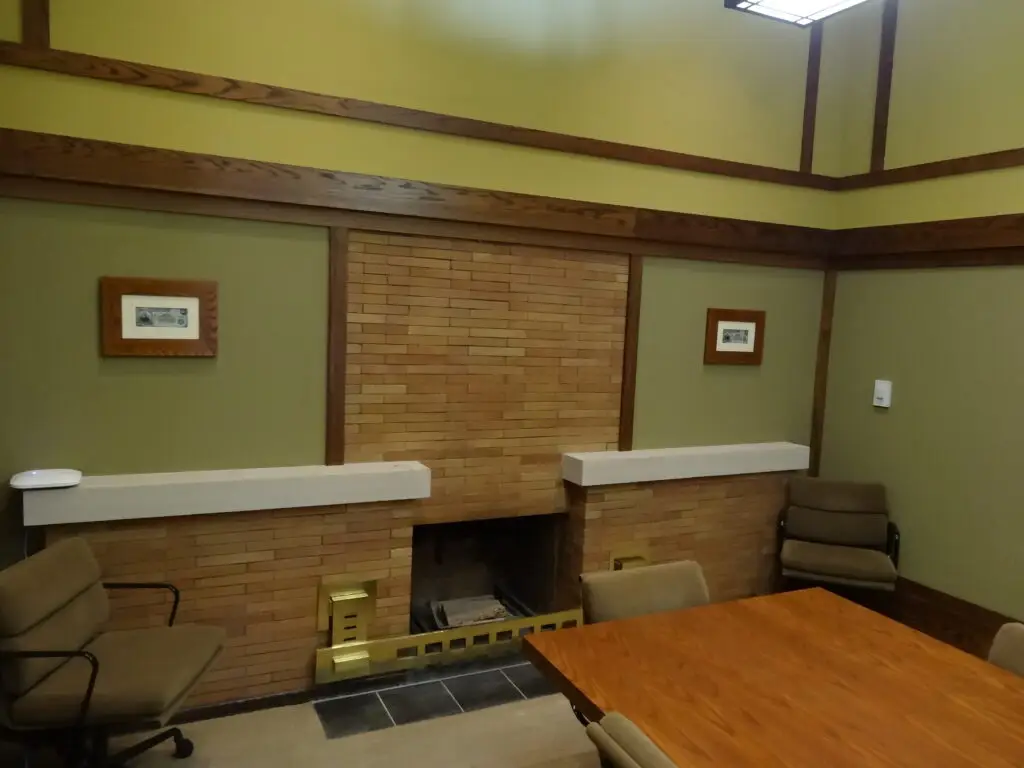
According to Wikipedia: “Letters, exchanged between Wright and Smith show that Wright was directly involved with the design of the interior and furnishings.” John Ayers, a Chicago based furniture manufacturer with whom Wright worked to produce designs for the B. Harley Bradley and Warren Hickox houses, made a suite of custom wood chairs, desks, and other furnishings for the bank. Unfortunately, almost all of that original furniture is now gone. Wright also designed brass light fixtures for the stone pedestals flanking the building’s front entrance. These are identical to lanterns used alongside the entrance gate of the E. C. Waller estate in River Forest, Illinois.
Sadly, there were major renovations in the 1950s that removed or destroyed many of Wright’s designs elements. But the 1960s brought another remodeling effort, including uncovering of the interior limestone walls, that returned to the bank much of its original character. Dwight is only about seventy-five miles southwest of Chicago. It’s a very short trip to take a look at another of Wright’s timeless masterpieces.
Tours
Tours are not available but you can view the interior of the bank during regular business hours.
Location
122 West Main Street, Dwight, IL
Resources, Links & Products
Browse these resources for more information about this FLW Building, it’s history and information about the region.

